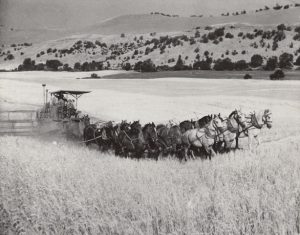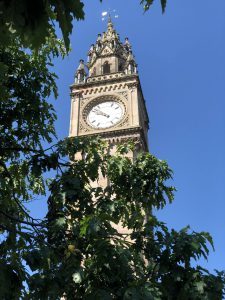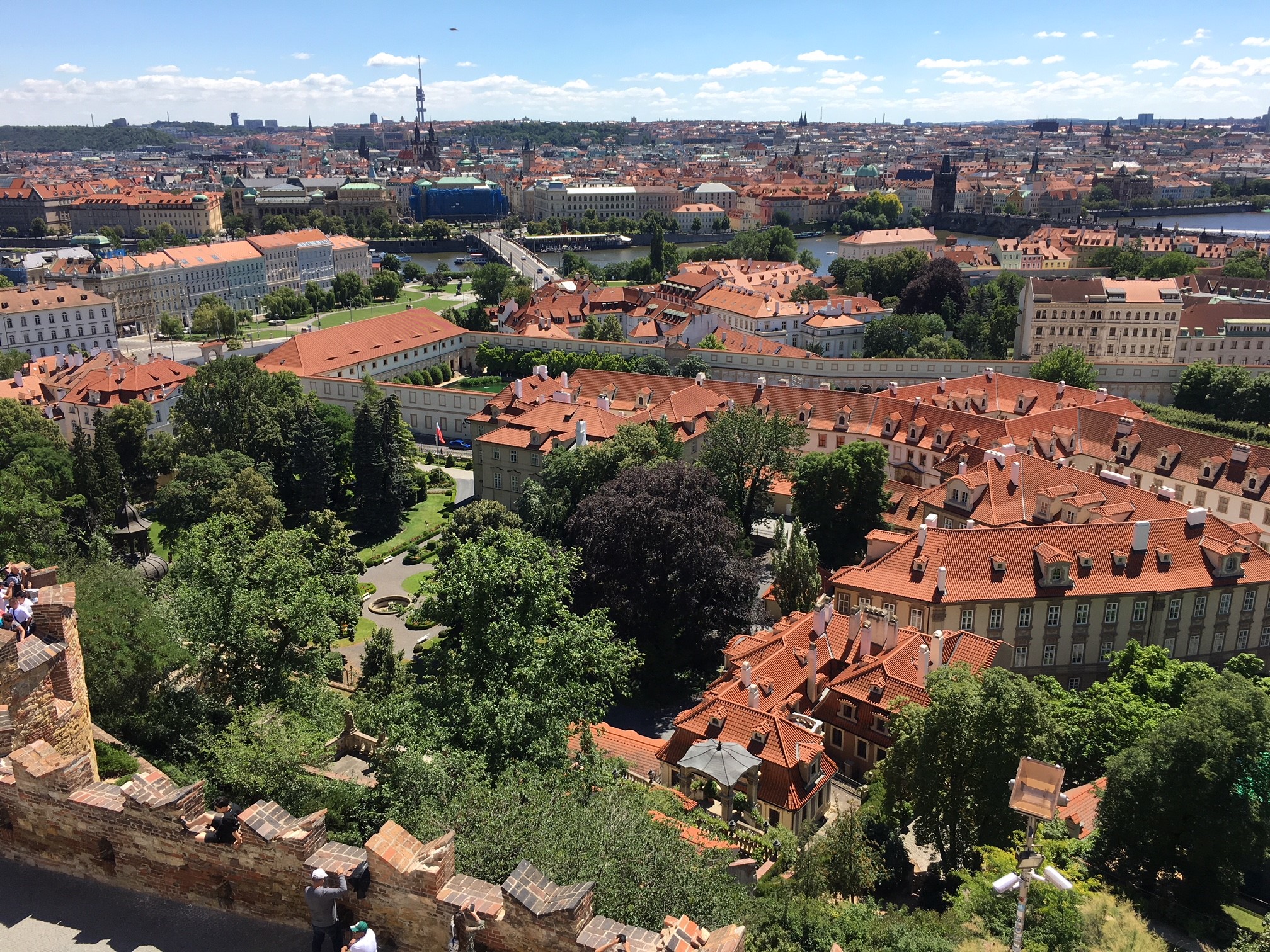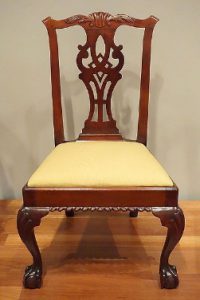Many of us cherish the notion that historical photographs capture a frozen moment in time. Upon more detailed examination, though, studio pictures sometimes possess more artifice and contrivance than would have been expected. Take, for instance, these paired images of my great-great-great-grandparents, Reuben Paine and Lovicy Hall. Continue reading Living moments
Monthly Archives: July 2018
Contributing citizens
 Several years ago my mother gave me a family picture that is unlike most family pictures; in fact, without the identifying information on the back, it doesn’t seem to be a family picture at all. Thank goodness for the label, which gives a ton of information, not only about the location, date, and people, but also about farming practices at the time. Continue reading Contributing citizens
Several years ago my mother gave me a family picture that is unlike most family pictures; in fact, without the identifying information on the back, it doesn’t seem to be a family picture at all. Thank goodness for the label, which gives a ton of information, not only about the location, date, and people, but also about farming practices at the time. Continue reading Contributing citizens
Lost to history

I recently read a book by Ellen Marie Wiseman entitled What She Left Behind. Among other themes in the book, it depicted the treatment of a woman who was committed to an asylum in early 1920 by her father. The main character was committed because she reacted strongly to a marriage arranged by her parents; she displayed outbursts of emotion. The author of What She Left Behind describes the conditions in an asylum based on the Willard Asylum in Ovid, New York, during the early twentieth century. Often, when I’m reading fiction, I think about my family tree and those living during the years in which the novel takes place. Were there individuals in my own family tree who “went mad” or were sent to live in an asylum? Were these episodes recognized as depression or mental illness; or was a person abandoned, without family to care for them and, thus, committed? Continue reading Lost to history
Kitchen inquisition
 One of my more inscrutable brick walls isn’t made out of brick at all. Rather, it looks to be made of cheese. No, not cheddar, bleu, or provolone, nor is it built from anything lost in the Badger State. I guess if had to describe the wall – you know, to say what sort of cheese it best resembled – I’d be forced to say “Swiss.” The reason for this is that the wall is somewhat genealogically airy, with both a cheesy truth and speculation leaking through it – at least in a manner of speaking.
One of my more inscrutable brick walls isn’t made out of brick at all. Rather, it looks to be made of cheese. No, not cheddar, bleu, or provolone, nor is it built from anything lost in the Badger State. I guess if had to describe the wall – you know, to say what sort of cheese it best resembled – I’d be forced to say “Swiss.” The reason for this is that the wall is somewhat genealogically airy, with both a cheesy truth and speculation leaking through it – at least in a manner of speaking.
The wall itself is a simple one. It was built around my mother’s date of birth, or at least the year in which she was born. Now, mom wasn’t born all that long ago, in 1935, so it’s amazing just how far back and out of memory “1935” can be – especially when one is trying to meld together “the rest of the story.” Continue reading Kitchen inquisition
Counting up
 Sometimes it is best not to count things. I have just finished my spreadsheet listing all marriages in Torrey’s New England Marriages Prior to 1700 that took place in or prior to 1643 for individuals who arrived in New England after 1640 (with a whole bunch whose date of arrival is not known). Guess how many make the list?
Sometimes it is best not to count things. I have just finished my spreadsheet listing all marriages in Torrey’s New England Marriages Prior to 1700 that took place in or prior to 1643 for individuals who arrived in New England after 1640 (with a whole bunch whose date of arrival is not known). Guess how many make the list?
As I start writing, the total is 1,182, although I am still culling out some duplicates, and there will be others who get eliminated for one thing or another, as we’ll see below. If I can figure out how to complete 100 sketches per year (instead of in 5 years), I will have this batch done by the time I am 82. Continue reading Counting up
Housekeeping
 Beginning this past Monday, and for at least the next few weeks, Vita Brevis will be running three posts per work week instead of the usual five. The idea is to mark the summer, when many of the NEHGS staff contributors (and Vita Brevis readers) are on holiday, but it also reflects the reality that with one employee to edit – and, often, write – posts, Vita Brevis is a demanding publication. (Yes, even with just one post a day!)
Beginning this past Monday, and for at least the next few weeks, Vita Brevis will be running three posts per work week instead of the usual five. The idea is to mark the summer, when many of the NEHGS staff contributors (and Vita Brevis readers) are on holiday, but it also reflects the reality that with one employee to edit – and, often, write – posts, Vita Brevis is a demanding publication. (Yes, even with just one post a day!)
Do the blog’s readers feel strongly about the dependable frequency of the usual publishing schedule? Or will they find that three posts per week, reliably published on Monday, Wednesday, and Friday, provide enough new content to keep them coming back to the blog?
Please let me know in the comments.
ETA: It seems that the consensus is for three posts per week during the summer, and perhaps even going forward. Many thanks for weighing in!
Misconceptions of an American
 People always ask: What ethnicity are you? This is a difficult question for genealogists, as we can get quite detailed with our answers: “Well, on my mother’s maternal line we have Irish from County Leitrim and Monaghan, on my mother’s paternal line we have Italians and Irish, and my paternal line…” Well, you get the drift.
People always ask: What ethnicity are you? This is a difficult question for genealogists, as we can get quite detailed with our answers: “Well, on my mother’s maternal line we have Irish from County Leitrim and Monaghan, on my mother’s paternal line we have Italians and Irish, and my paternal line…” Well, you get the drift.
And while I’ve researched Italians, Germans, Irish, and Norwegians in my own ancestry, I’ve identified most with the Irish, given my closeness with my (likely mostly Irish) grandmother. Because of this, I’ve always thought that I knew something about the Irish, their culture, and their history. However, after two weeks in Ireland, and several guided bus tours, I found that of what I thought I knew, I actually knew very little. Here are some of the most embarrassing revelations: Continue reading Misconceptions of an American
Lasting connections

I was recently on holiday in London and Prague, and in the latter city I had a rather serendipitous encounter, as it seemed – but perhaps was not! While touring the Lobkowicz Palace at Prague Castle – an impressive structure in its own right, but only a small part of the Castle, which looms over the city – I walked up to a portrait of Princess Leopoldine Lobkowicz (1867–1936) by her contemporary Philip de László (1869–1937). As I was on a tour being led by Leopoldine’s great-great-great-nephew, and as I was about to meet the artist’s great-grandson for dinner in London, this coincidence seemed rather propitious. Continue reading Lasting connections
ICYMI: Researching family heirlooms
[Editor’s note: This blog post originally appeared in Vita Brevis on 23 January 2017.]

The Research Services team at NEHGS is occasionally approached with questions relating to the history of ownership (i.e. provenance) of a particular family heirloom. These questions are usually supplemented with stories about the heirloom’s first owner and how the object was acquired. Genealogists are uniquely qualified to carry out provenance research due to their familiarity with and frequent use of two sources commonly used in provenance research: wills and estate inventories. However, before consulting any of these sources, a serious study of an heirloom’s provenance should begin by studying the object itself.
To illustrate how the study of an object is crucial to provenance research, consider the following hypothetical scenario: An individual is interested in documenting the ownership of a piece of heirloom furniture (a side chair) that has been in the family for multiple generations. For the purpose of this exercise, let’s say that the chair is similar in form to the image at left, and that the chair is not a reproduction. Continue reading ICYMI: Researching family heirlooms
Gropius in New England
 In 1919, Walter Gropius founded the Bauhaus, a German school of design combining art, crafts, and industrial technology. This modern form of design favored clean lines rather than ornamentation – creating elegance in practicality, economy of form, and attention to materials. The Nazis, however, did not favor this minimalist school of design, and closed the school in 1933. Continue reading Gropius in New England
In 1919, Walter Gropius founded the Bauhaus, a German school of design combining art, crafts, and industrial technology. This modern form of design favored clean lines rather than ornamentation – creating elegance in practicality, economy of form, and attention to materials. The Nazis, however, did not favor this minimalist school of design, and closed the school in 1933. Continue reading Gropius in New England

